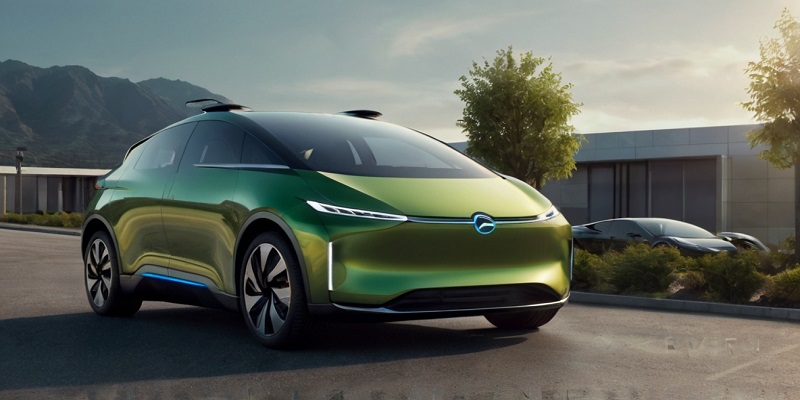The future of transportation is electric. Electric vehicles (EVs) are not just a trend; they are becoming a significant part of our daily lives. At the same time, smart grids are transforming the way we distribute and consume energy. Together, EVs and smart grids can lead us towards a more energy-efficient and sustainable future.
The Rise of Electric Vehicles
Electric vehicles are gaining popularity for several reasons. Firstly, they help reduce greenhouse gas emissions. Unlike traditional vehicles that run on fossil fuels, EVs produce zero tailpipe emissions. This is crucial in the fight against climate change. Additionally, EVs are becoming more affordable. Advances in battery technology have reduced costs, making EVs a viable option for many consumers. Furthermore, governments around the world are offering incentives to encourage the adoption of EVs. Tax credits, rebates, and other incentives make purchasing an EV more attractive.
Moreover, EVs are convenient. Many people charge their vehicles at home overnight. This eliminates the need for frequent trips to the gas station. The maintenance costs are also lower compared to traditional vehicles. EVs have fewer moving parts, which means fewer things can go wrong. This results in lower repair costs and longer vehicle lifespans.
Understanding Smart Grids
A smart grid is an advanced electricity network. It uses digital technology to monitor and manage the transport of electricity. This system improves the efficiency, reliability, and sustainability of electricity services. Unlike traditional grids, smart grids can detect where electricity is needed most. They can then direct the flow of electricity to those areas. This reduces waste and ensures that power is available where it is needed.
Smart grids also integrate renewable energy sources. Solar panels and wind turbines can be connected to the grid. This allows for the use of clean energy. Smart grids can also store excess energy. This stored energy can be used during peak demand times. This reduces the need for additional power plants and decreases overall energy consumption.
The Synergy Between EVs and Smart Grids
Electric vehicles and smart grids are a perfect pairing for several reasons. Firstly, EVs can act as mobile energy storage units. When connected to the grid, they can supply power during peak demand periods. This is known as vehicle-to-grid (V2G) technology. V2G can help balance the load on the grid. It can also reduce the need for additional power plants.
Secondly, smart grids can optimize the charging of EVs. They can determine the best times to charge vehicles based on demand and supply. This helps to avoid overloading the grid during peak times. It also ensures that EVs are charged when electricity is cheapest. This is beneficial for both the grid and the consumers.
Furthermore, the integration of EVs and smart grids promotes the use of renewable energy. Smart grids can store excess energy generated by solar panels and wind turbines. This stored energy can then be used to charge EVs. This creates a cycle of clean energy production and consumption.
Benefits for Consumers
Consumers can benefit greatly from the integration of EVs and smart grids. Firstly, they can save money on energy costs. Smart grids can charge EVs during off-peak times when electricity is cheaper. This reduces the overall cost of charging the vehicle.
Secondly, consumers can earn money through V2G technology. By allowing their EVs to supply power to the grid, they can receive compensation. This turns their vehicles into assets that can generate income.
Additionally, consumers can enjoy greater reliability in their energy supply. Smart grids are more efficient and reliable than traditional grids. They can quickly respond to changes in demand and supply. This reduces the risk of blackouts and ensures a steady supply of electricity.
Environmental Impact
The environmental benefits of EVs and smart grids are significant. Firstly, EVs reduce greenhouse gas emissions. This is crucial in the fight against climate change. By replacing traditional vehicles with EVs, we can significantly reduce our carbon footprint.
Secondly, smart grids promote the use of renewable energy. They integrate solar panels and wind turbines into the grid. This reduces our reliance on fossil fuels. It also decreases the overall carbon emissions from power generation.
Furthermore, the combination of EVs and smart grids can help to reduce air pollution. Traditional vehicles emit pollutants that contribute to poor air quality. By replacing these vehicles with EVs, we can improve air quality and public health.
Challenges and Solutions
While the integration of EVs and smart grids offers many benefits, there are also challenges. Firstly, the initial cost of EVs and smart grid infrastructure can be high. However, government incentives and subsidies can help to offset these costs. Additionally, the long-term savings on energy costs and maintenance can make the investment worthwhile.
Secondly, there is the challenge of grid capacity. As more EVs are adopted, the demand for electricity will increase. However, smart grids can manage this demand more efficiently than traditional grids. They can direct electricity where it is needed most and store excess energy for later use.
Furthermore, there is the challenge of consumer adoption. Many people are still hesitant to switch to EVs and smart grids. Education and awareness campaigns can help to address this issue. By highlighting the benefits and addressing the concerns, we can encourage more people to make the switch.
The Future of EVs and Smart Grids
The future looks bright for EVs and smart grids. Advances in technology are making them more efficient and affordable. Governments around the world are recognizing the benefits and offering support. As more people adopt EVs and smart grids, we can expect to see significant improvements in energy efficiency and sustainability.
The integration of EVs and smart grids represents a significant step towards a cleaner and more efficient energy future. By working together, they can help to reduce greenhouse gas emissions, promote the use of renewable energy, and improve the reliability and efficiency of our energy supply. This is a win-win situation for consumers, the environment, and the economy.
Conclusion
In conclusion, the pairing of electric vehicles and smart grids is a perfect match for energy efficiency. They complement each other in ways that enhance the benefits of both technologies. Together, they can lead us towards a more sustainable and energy-efficient future. As technology continues to advance, the potential for even greater integration and efficiency will only increase. It is clear that the future of transportation and energy lies in the collaboration between EVs and smart grids.








